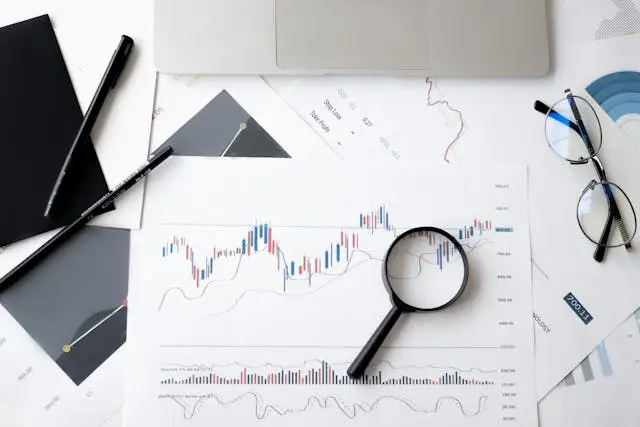In the ever-evolving world of finance, forecasting economic trends is both an art and a science. As a research analyst, your ability to predict these trends is crucial for helping clients navigate the complexities of the market. This skill requires a deep understanding of macroeconomic indicators, historical data analysis, and a keen sense of how various factors interact to shape future economic conditions.
This guide will delve into the essential elements of economic forecasting, offering you a robust framework to enhance your analytical capabilities.
Understanding Macroeconomic Indicators
Macroeconomic indicators are the foundation of any economic forecast. These indicators include GDP growth rates, inflation rates, unemployment rates, and interest rates. Each of these plays a critical role in shaping the economic landscape.
Gross Domestic Product (GDP)
GDP is the most comprehensive measure of economic activity. It reflects the total value of goods and services produced within a country. A growing GDP suggests a healthy economy, while a contracting GDP indicates economic trouble. By analyzing GDP trends, you can gauge the overall health of the economy and predict future growth patterns.
Inflation Rates
Inflation is another critical factor in economic forecasting. Rising inflation can erode purchasing power and signal overheating in the economy, while low inflation might indicate weak demand. Understanding the causes and trajectory of inflation is essential for predicting future economic conditions.
Unemployment Rates
The unemployment rate provides insight into the labor market’s health. High unemployment rates can indicate economic distress, while low rates suggest robust economic activity. By analyzing trends in unemployment, you can assess the economy’s capacity to create jobs and sustain growth.
Interest Rates
Interest rates, controlled by central banks, are a powerful tool for managing economic activity. Higher interest rates can slow down economic growth by making borrowing more expensive, while lower rates can stimulate growth. Understanding the relationship between interest rates and other economic indicators is crucial for accurate forecasting.
The Role of Historical Data
Historical data provides a valuable context for forecasting. By studying past economic cycles, you can identify patterns and trends that may repeat in the future. For example, the relationship between interest rates and inflation has been well-documented over time, providing a reliable basis for making predictions.
Analyzing Past Economic Cycles
Economic cycles typically follow a pattern of expansion, peak, contraction, and trough. By examining previous cycles, you can better understand where the current economy might be headed. This analysis involves looking at key indicators during different phases of the cycle and identifying the factors that triggered changes.
Utilizing Regression Analysis
Regression analysis is a statistical tool that allows you to measure the relationship between different variables. By applying regression analysis to historical data, you can quantify the impact of certain factors on economic trends. This technique is particularly useful for identifying leading indicators—variables that tend to change before the economy as a whole does.
Incorporating Qualitative Insights
While quantitative data is essential, qualitative insights are equally important in economic forecasting. These insights often come from understanding the broader context in which economic changes occur, including political developments, technological advancements, and global events.
The Impact of Geopolitical Events
Geopolitical events, such as elections, trade agreements, or conflicts, can have significant effects on the economy. For instance, trade tensions between major economies can disrupt supply chains and impact global growth. By staying informed about geopolitical developments, you can anticipate their potential economic impacts.
Technological Innovation and Its Economic Implications
Technological advancements can drive economic growth by creating new industries and transforming existing ones. However, they can also lead to job displacement and economic inequality. Understanding the implications of technological change is crucial for making accurate economic forecasts.
Predictive Models and Tools
Several predictive models and tools can enhance your forecasting abilities. These models range from simple moving averages to complex econometric models. The choice of model depends on the specific economic trend you are trying to forecast and the available data.
Econometric Models
Econometric models use statistical techniques to forecast economic trends based on historical data. These models can range from simple linear regressions to more complex multivariate models that account for multiple variables simultaneously. Econometric models are particularly useful for long-term forecasts as they can incorporate a wide range of factors.
Machine Learning and AI in Forecasting
Advancements in machine learning and artificial intelligence (AI) have opened new possibilities for economic forecasting. These technologies can analyze vast amounts of data and identify patterns that might be missed by traditional methods. For instance, AI algorithms can process real-time data from various sources, providing more accurate and timely forecasts.
Scenario Analysis
Scenario analysis involves creating different hypothetical scenarios based on varying assumptions about the future. This technique helps you understand how different factors could impact the economy under various conditions. For example, you might create scenarios based on different levels of government spending or varying interest rates to see how each would affect GDP growth.
Challenges in Economic Forecasting
Despite the tools and techniques available, economic forecasting is inherently challenging due to the complexity of economic systems and the unpredictability of external factors. It’s important to recognize the limitations of your models and to continuously refine your forecasts based on new data.
The Uncertainty of External Shocks
External shocks, such as natural disasters, pandemics, or sudden geopolitical events, can disrupt even the most well-founded forecasts. These events are difficult to predict and can have far-reaching economic consequences. Being aware of these risks and incorporating them into your forecasts is crucial for maintaining accuracy.
The Importance of Continuous Learning
The field of economic forecasting is constantly evolving, with new models and techniques being developed regularly. Staying updated on the latest research and continuously refining your skills is essential for providing accurate and reliable forecasts.
Enhancing Your Forecasting Skills
Forecasting economic trends is a complex but rewarding task that requires a deep understanding of macroeconomic indicators, historical data, qualitative insights, and predictive models. By honing these skills, you can provide valuable guidance to your clients, helping them navigate the uncertainties of the market.
At Rosenberg Research, we are committed to supporting research analysts with the insights and tools needed to excel in economic forecasting. Whether you’re predicting GDP growth or assessing the impact of geopolitical events, our expertise can help you make informed decisions.
Try Our Free Trial
If you found this guide helpful, we invite you to explore our services with a free trial. Our in-depth analysis and expert forecasts can enhance your understanding of economic trends and support your investment strategies. Start your free trial today.


